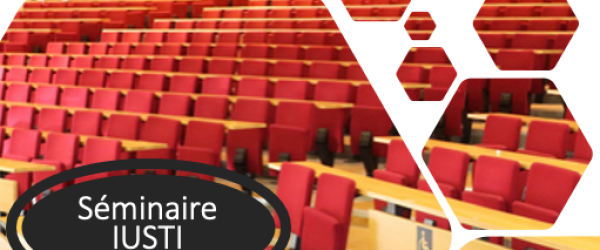Mardi 6 juin 2025 à 11h, salle 250 - IUSTI
In this talk, I will try to show that the study of bioclogging using microfluidics is indeed a powerful way to gain insight into the physics of soft and reactive porous media.
Membrane separation of solid particles suspended in a liquid is essential for many processes, but has a major drawback: the pores can become clogged by particle accumulation, leading to membrane fouling. Clogging is now relatively well understood for inert, rigid particles, but the study of bioclogging – clogging by biological objects – opens up many research questions because living cells have unique properties: they are deformable, have specific adhesion mechanisms and can proliferate, consume nu- trients and die. As a result, these cells can change both shape and volume, as well as rearrange themselves, thereby modifying the microstructure of a clog, which is actually a soft and reac- tive porous media which can potentially grow. Yeast Saccha- romyces cerevisiæ is a model biological object whose biological and mechanical properties are well established. Most of bio- clogging studies, including the one I will present, use this living object.
Numerous studies of bioclogging at the membrane scale report that the permeability of a clog composed of yeast is difficult to predict [2, 3]. In fact, there is a lack of microscale measure- ments to relate the macroscale permeability measurements to the displacements, cell deformations and microstructure of a biological cell clog. The difficulty with microscale permeability measurements lies in the flow rates to be measured, which can be less than 10 nL/min, beyond the range of commercial flowmeters and without the benefit of the many existing metrology techniques applied to microfluidics [1]. We have developed an on-chip flowmeter (see Fig. 1) that overcomes these limitations and opens up new perspectives for permeability studies in confined soft porous media.
In addition, all bioclogging studies use inert yeast which are still alive but unable to proliferate. However, in many industrial applications, yeast live in an environment that can favour their proliferation, and the addition of antibiotics to stop proliferation in industrial processes is not desirable. Cell proliferation activates a loop between biological activity of the cell and nutrient availability, resulting in a complex saptio-temporal behaviour of a yeast cell. We have used microfluidics to accurately assess the spatio-temporal properties of a clog – such as its length or internal movements. We have developed a model of reactive and growing porous media that explains our experimental results. That shows that bioclogging study can be a powerful tool to study reactive biological porous media.
[1] Cavaniol, C., Cesar, W., Descroix, S., & Viovy, J.-L. (2022). Flowmetering for microfluidics. Lab on a Chip, 22(19), 3603–3617.
[2] Foley, G. (2006). A review of factors affecting filter cake properties in dead-end microfiltration of microbial suspensions. Journal of Membrane Science, 274(1-2), 38–46.
[3] Katagiri, N., Tomimatsu, K., Date, K., & Iritani, E. (2021). Yeast Cell Cake Characterization in Alcohol Solution for Efficient Microfiltration. Membranes, 11(2), 89.

